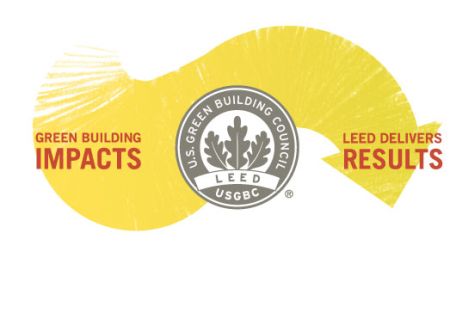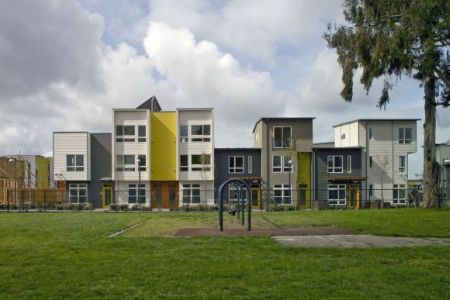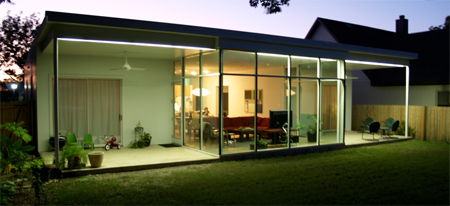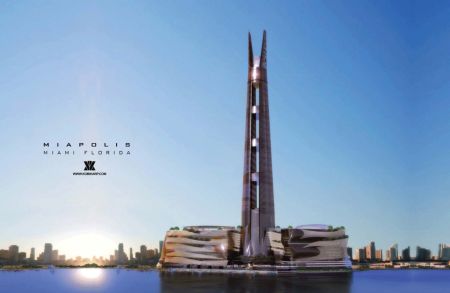A surfeit of green and renewable energy devices such as solar panels, wind turbines, and smart meters enable building owners to increase efficiency and cut energy costs, but such technologies are only, in essence, appendages for buildings. If you’re looking for a way to increase the efficiency and environmental friendliness of a building, you need not look further than Leadership in Energy and Environmental Design (LEED), a program that is rapidly becoming the de facto standard in green building development.
Even as LEED continues to grow in regard and green efficacy, some might not be as well versed as they would like in the specifics of LEED: its multiple rating systems, the assorted levels of certification, and how it pertains to the buildings we inhabit every day. Our LEED guide provides an extensive overview of how LEED was formed, what it is intended to accomplish, and how it benefits you.

Taking the LEED
Recognizing that green buildings would eventually play a large role in environmental sustainability, the U.S. Green Building Council (USGBC), a nonprofit organization dedicated to inventing cost- and energy-efficient methods of green building design, created LEED in 1998. As defined by the USGBC, LEED is “an internationally recognized green building certification system, providing third-party verification that a building or community was designed and built using strategies aimed at improving performance across all the metrics that matter most: energy savings, water efficiency, CO2 emissions reduction, improved indoor environmental quality, and stewardship of resources and sensitivity to their impacts.”
Each of those metrics are areas most of us hear about frequently in this age of green awareness. Combined, they provide a framework constructed by the USGBC that identifies and executes practical and assessable green building design. Crafted for versatility, LEED is applicable to both residential and commercial architecture. It also allows pre-existing buildings to be retrofitted in order to make them as efficient as modern counterparts.
Ratings
Since its inception more than a decade ago, LEED has gone through several revisions and will doubtlessly undergo more changes in the future. At present, all the tweaks and updates made to the program by USGBC have resulted in nine different rating systems with five categories spread across those systems.

Each rating system is oriented toward a particular type of building design. The categories and their rating systems are:
Green Building Design & Construction
• LEED for New Construction and Major Renovations
• LEED for Core & Shell Development
• LEED for Schools
• LEED for Retail New Construction, which is planned for 2010
Green Interior Design & Construction
• LEED for Commercial Interiors
• LEED for Retail Interiors, which is planned for 2010
Green Building Operations & Maintenance
• LEED for Existing Buildings: Operations & Maintenance
Green Neighborhood Development (Pilot Phase)
• LEED for Neighborhood Development
Green Home Design and Construction
• LEED for Homes
Certification
In addition to five main categories and nine LEED rating systems, buildings must attain one of four levels in order to become LEED Certified. Those levels are attained by achieving a certain amount of points across various categories. Ryan Potvin of San Francisco-based LEED consulting firm Environmental Building Strategies explains that LEED points are “rated on a 100-point scale. You need at least 40 points to get your building LEED certified. 50 is silver, 60 is gold, 80 gets you platinum.” One hundred points is only a base value.
“There are actually more than 100 points because there are regional point scales that are purely focused on issues concerning your area,” continues Potvin. “For example, in San Francisco, water is an issue, as is solar.”
LEED certification can only be attained via the USGBC. “LEED certification is obtained after submitting an application documenting compliance with the requirements of the rating system as well as paying registration and certification fees,” according to Wikipedia.

Green building professionals can also become LEED accredited, which allows those professionals to facilitate the rating of buildings with various LEED systems. In January 2008, the USGBC helped establish the Green Building Certification Institute (GBCI), “an independent, third-party organization committed to ensuring precision in the design, development, and implementation of the processes used to increase and measure green building performance (certification) and green building practice (credentialing),” according to the GBCI website.
Although a specific building’s LEED information isn’t commonly offered on-site, building tenants can easily acquire their building’s LEED info through the USGBC. On their website, the organization maintains “a directory of all buildings that are certified [and registered],” says Ryan Potvin. ” You can find out what level of certification a building earned, but you can’t find out how many points they received. You can also [contact] the USGBC directly and they’ll give you a breakdown of the building’s inspection.”
LEED at Home
With certification hoops to hop through and deep rating systems to understand, you might think LEED certification only applies to large-scale commercial buildings. Actually, LEED is just as oriented for residential architecture as it is larger projects.

Image via Philip Newburn
The LEED for Homes rating system is geared toward designing and constructing high-performance green homes. The goal of a LEED-certified green home is to construct a residence that uses less energy – which manifests as more affordable energy bills – as well as less water and natural resources. Reducing waste is also targeted, as are durability and comfort. Recently, a number of LEED housing developments have sprouted across the U.S. such as an eco home in Fort Worth, Texas, and a residential housing development consisting of several apartments and townhouses in Oakland, California.
Back to the LEED Future
More and more new buildings are being planned and constructed with LEED certification in mind, but pre-existing buildings don’t have to be left out. Retrofitting, the process of implementing green solutions in current buildings, is being employed by the USGBC in the form of LEED for Existing Buildings, a program which “helps building owners and operators measure operations, improvements and maintenance on a consistent scale, with the goal of maximizing operational efficiency while minimizing environmental impacts.” Through LEED for Existing Buildings, issues such as chemical disposal are targeted, and upgrades such as maintenance and recycling programs are applied in order to improve the building’s waste efficiency.
Optimizing the past for the future isn’t always easy, but it is always doable. “There are cases where [retrofitting is] very hard to do, or it’s not financially feasible to do,” says Ryan Potvin. “If you’re in a rural area it can be a bit harder. It’s never impossible, it just might take more planning, or focusing on different areas.”
Pros and Cons
The most obvious benefit of LEED certification is knowing that your building has been marked by the government as an example of sustainability and efficiency. “LEED certification, which includes a rigorous third-party commissioning process, offers compelling proof to you, your clients, your peers and the public at large that you’ve achieved your environmental goals and your building is performing as designed,” explains NRDC.
Such eco friendliness is not without cost–literally. LEED certification tends to be pricey, and the time needed for design professionals who aren’t familiar with LEED to research what such projects require takes a toll on construction time. Building materials must meet LEED standards in order to be approved, and shortages of such materials cause delays, as do LEED misunderstandings between design and construction teams.

The uniqueness of buildings also comes into play: because every building is different, it is conceivable that every building may have vastly different LEED concerns to consider. “It’s hard to follow a rating system for all types of buildings,” admits Ryan Potvin, “but that’s why there are multiple rating types. There’s always uniqueness in buildings.”
However, it is important to consider that high costs incurred during planning and construction phases are often recouped many times over due to a LEED building’s higher-than-normal efficiency ratings. Also, although initial costs will be higher due to the purchase of more materials and tighter standards; shooting for the highest LEED level possible is bound to result in even greater savings, since those levels indicate the most efficient operations possible. You may pay more at first, but your building’s green efficiency should more than pay for those costs over the years. Finally, many government incentives for pursuing LEED certification are offered, which helps ease the burden of price.
Ultimately, it is LEED’s continual booms in popularity that Ryan Potvin considers a testament to the program’s effectiveness in environmental sustainability. “For the first time since we started, we’re talking to building owners and operators who demand that their building be LEED certified because their tenants are demanding it. There’s a real drive from tenants. It’s a huge step.”